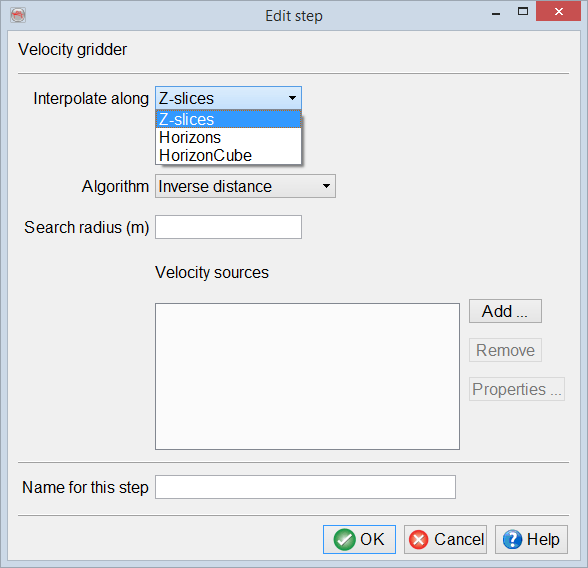5.2.5 Velocity Gridder
The gridding will create a volume out of a sparsely sampled dataset. The input source MUST be tagged with a velocity type. Indeed the gridding is applied to the time-depth relation hold by the velocity source and not on the amplitudes of the velocity source. This preserves the time-depth relation and blocky-ness of interval velocity models. The gridded time-depth relation is converted back to the input velocity type in the output volume.
However any other data type could be gridded by this module (Thomsen parameters, temperatures, ...). These other types must be tagged as delta, epsilon or eta before being used for gridding. The functions will be vertically interpolated using a linear 1D interpolation before the lateral gridding.
Two interpolation methods are available for gridding: inverse distance interpolation or triangulation. The first method is designed for the interpolation of sparse dataset, while the second algorithm should be preferred if the input exists on a regular (but coarse) grid. In general gridding is always followed by some filtering.

The input data can be either a (coarse SEG-Y imported) volume, stored (ascii) functions or velocity points (requires the Velocity Model Building plugin)
Clicking on the 'Properties' button will allow you to change the selected input for this step:

Velocity volumes have to be tagged to recognize their type.
Tip: If you have no velocity volume available, press 'Add' in the 'Edit Step' window and then, in the window that pops up (shown below), press 'Create':

Here you may tag a volume with a velocity type, so that it can be used as input for the gridding step. Or change the tag that the volume has. This can be useful for interpolation of velocity cubes (for example, we strongly advise against trying to interpolate Vint or Vrms, but Eta-tagged volumes can be interpolated):
